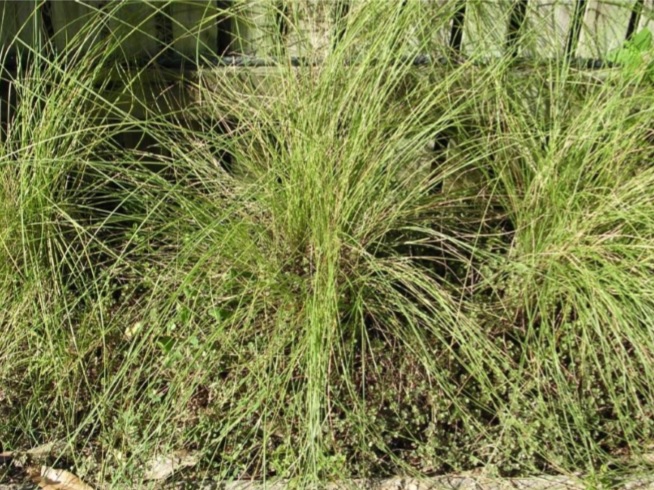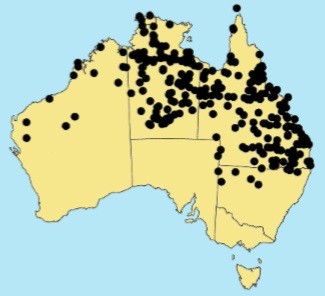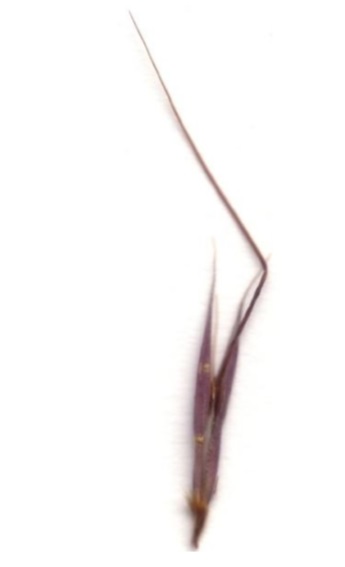Golden Beard Grass – Chrysopogon fallax
Name
Chrysopogon is from the Greek chrysos (golden) and pogon (beard), alluding to the golden hairs on the inflorescence; fallax from the Latin for deceptive, closely resembling another species.
Description
Chrysopogon fallax is an erect, tufted, perennial grass 30–150 cm tall. Leaves are mostly basal; the old leaf sheaths persist and have a woolly appearance. The inflorescence is a panicle 7–21 cm long, with whorled branches. The spikelets appear at the end of the branches and are purplish to golden brown.
Distribution
This species is endemic to Australia and grows on a range of soils. It occurs on sand among dunes, but is also found on clay and in rocky places. This grass is resistant to drought and heavy grazing.
Ecological Notes
Golden Beard Grass is eaten by the hairy-nosed wombat and the seeds are eaten by the long-tailed finch.
Propagation
There is some indication that the seed may need to be stored for two years to achieve maximum germination.
References
- Gardner CA (1952) Flora of Western Australia Vol. 1, Part 1. In ‘Gramineae’. (Government Printer:Perth)
- Jacobs SWL, Whalley RDB, Wheeler DJB (2008) ‘Grasses of New South Wales (Fourth Edition).’ (University of New England: Armidale)
- Sharp D, Simon BK (2002) AusGrass: grasses of Australia. CD-ROM, Version 1.0. (Australian Biological Resources Study: Canberra, and Environmental Protection Agency: Brisbane)
- Simon BK (1993) ‘A Key to Australian Grasses.’ (Qld Dept Primary Industries: Brisbane)
- Tothill JC, Hacker JB (1983) ‘The grasses of southern Queensland.’ (University of Queensland Press:St Lucia)
Related Pages
Golden Beard Grass © C.Gardiner JCU Townsville 2012




